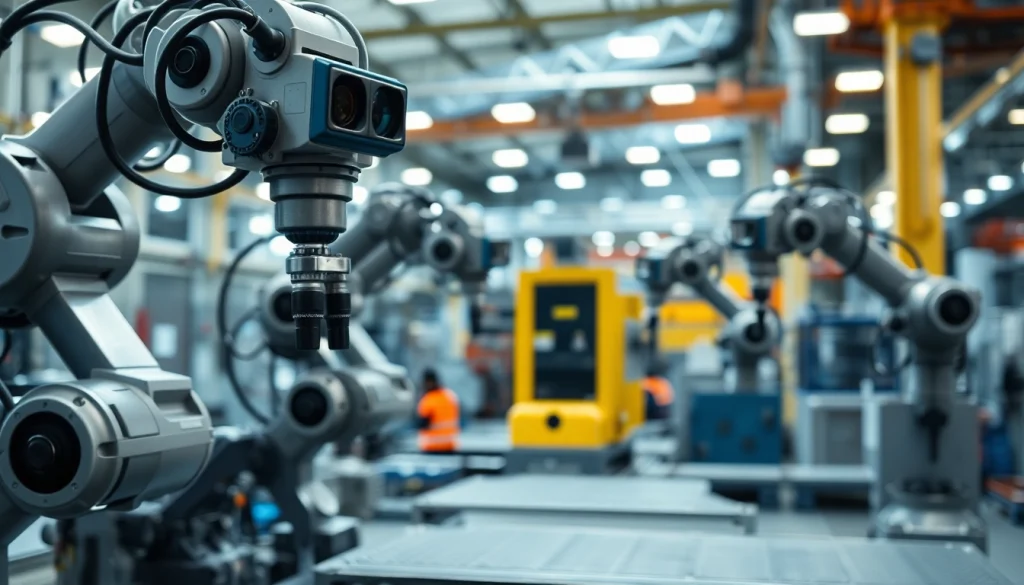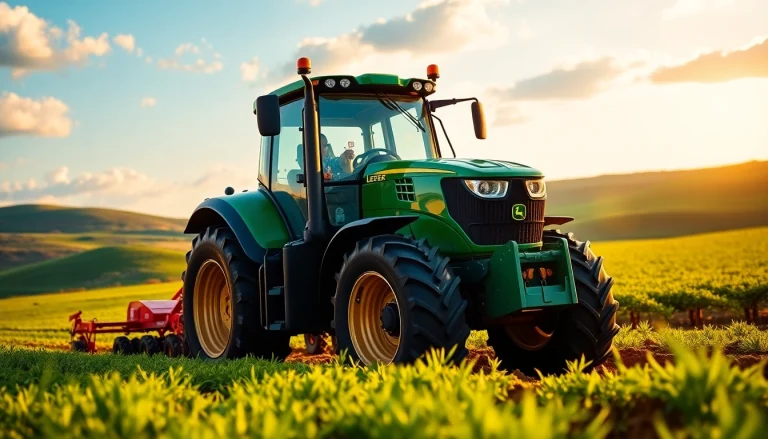
Understanding Machine Vision: A Comprehensive Overview
Machine vision is a transformative technology that integrates imaging, processing, and automated analysis to empower systems to interpret visual data. Whether it’s inspecting manufactured products or assisting autonomous vehicles, machine vision plays a pivotal role across numerous sectors. In this article, we will delve into the intricacies of machine vision, exploring its components, applications, technologies, benefits, challenges, and metrics for success.
What is Machine Vision?
Machine vision refers to the ability of a computing system to interpret visual information captured through imaging devices, such as cameras. This encompasses a range of processes including image acquisition, processing, and analysis for various purposes such as inspection, guidance, and control. Unlike human vision, which is intuitive and subjective, machine vision relies on algorithms and predefined criteria to make objective decisions based on visual data.
The Components of Machine Vision Systems
Machine vision systems are composed of several key components that work in concert to achieve accurate visual interpretation:
- Cameras: These devices capture images of the subject matter. They can be 1D, 2D, or 3D, depending on the required analysis.
- Lighting: Proper illumination is crucial for image quality. Different lighting techniques, such as backlighting or spotlighting, are utilized to enhance the visibility of features in an image.
- Processors: After image acquisition, processors analyze the visual data. This can include CPUs or GPUs that handle intensive computations and algorithmic processing.
- Software: Specialized machine vision software interprets the data and executes various algorithms for tasks such as defect detection and object recognition.
- Output Devices: These devices convey results, which can include alarms, reports, or integrated control signals for systems to act upon.
Applications of Machine Vision in Various Industries
Machine vision finds application across a wide range of industries:
- Manufacturing: It’s employed for quality control and inspection of products, ensuring they meet predefined standards.
- Healthcare: In medical imaging, machine vision aids in diagnostic processes by interpreting visual data from scans and tests.
- Logistics: Automated systems utilize machine vision for sorting and tracking goods moving through warehouses.
- Aerospace and Automotive: These sectors utilize machine vision for safety checks and component verification throughout the production process.
- Food and Beverage: Ensures compliance with hygiene and quality standards by inspecting packaging and products.
Key Technologies Behind Machine Vision
Image Acquisition in Machine Vision
The first step in machine vision systems is image acquisition. High-quality images are pivotal for the accuracy of subsequent analysis. Both the type of camera and the lighting conditions play significant roles in how images are captured. Traditional CCD (Charge-Coupled Device) cameras and modern CMOS (Complementary Metal-Oxide-Semiconductor) sensors are commonly used. The choice between these technologies depends on factors like resolution, speed, and budget.
Processing and Analyzing Visual Data
Once images are obtained, the processing phase kicks in. This typically involves various stages:
- Pre-processing: Techniques such as denoising, thresholding, and edge detection enhance image quality before analysis.
- Feature Extraction: This involves identifying and isolating important features within images, such as edges, lines, or colors.
- Decision Making: Based on the extracted features, machine learning algorithms are frequently employed to make predictions or classify images.
- Post-processing: This final phase involves presenting the results to users or downstream systems, often involving display formats or data storage for future reference.
Integration with Automation Systems
Machine vision doesn’t operate in isolation; it’s often integrated with broader automation systems. For example, it may work alongside robotics in assembly lines, providing real-time feedback on component placement and quality assurance. This integration enables systems to perform complex tasks autonomously, such as sorting, packing, or even adaptive learning, where the system improves over time based on feedback from visual inputs.
Benefits and Challenges of Implementing Machine Vision
Advantages of Machine Vision Technology
The implementation of machine vision offers several distinct advantages:
- Improved Accuracy: Automation reduces human errors, leading to more consistent product quality.
- Increased Efficiency: Machine vision systems can operate continuously without fatigue, significantly increasing throughput.
- Cost Reduction: Early defect detection through inspection minimizes waste and follows through in reduced costs from reworks and customer returns.
- Enhanced Data Collection: Machine vision systems gather data that can be utilized for analytics, helping organizations make informed decisions based on trends and patterns.
Common Obstacles in Adoption
Despite its benefits, the adoption of machine vision technology faces several challenges:
- High Initial Costs: The setup costs associated with cameras, lighting, and software can be substantial.
- Complexity of Implementation: Integrating machine vision into existing processes can be daunting without sufficient expertise and training.
- Data Management Issues: As machine vision systems generate large volumes of data, managing and storing this information effectively poses a challenge.
Strategies for Successful Implementation
To navigate some of the challenges associated with implementation, organizations can adopt several strategies:
- Start Small: Begin with pilot projects to assess effectiveness and gradually expand.
- Invest in Training: Providing comprehensive training to employees can ensure smoother transitions and greater acceptance.
- Utilize Experienced Vendors: Partnering with experienced machine vision vendors for installation and support can alleviate many implementation headaches.
Machine Vision vs. Computer Vision: Key Differences
Defining Machine Vision and Computer Vision
While often used interchangeably, machine vision and computer vision have distinct definitions and applications. Machine vision primarily focuses on industrial applications such as quality control, automation, and reliability, while computer vision encompasses broader tasks typically associated with AI and human-like perception, such as facial recognition, scene reconstruction, and object detection.
Use Cases and Industry Applications
Machine vision has specific applications in manufacturing and quality control, whereas computer vision extends into areas like augmented reality and autonomous vehicles. For instance:
- Machine Vision: Automated inspection in production lines, barcode scanning, assembly verification.
- Computer Vision: Enhancing user experiences in mobile applications, developing self-driving cars, and analyzing videos.
Future Trends in Machine Vision Technology
The future of machine vision is influenced by several trends:
- AI Integration: Machine learning algorithms are becoming integral, allowing systems to learn from visual data and adapt in real-time.
- Edge Computing: Processing data closer to where it is collected in industrial settings enhances speed and reduces latency.
- Emphasis on Customization: Businesses seek tailored solutions that cater specifically to their operational needs, driving demand for custom machine vision systems.
Measuring Performance: Metrics for Machine Vision Systems
Key Performance Indicators for Success
To evaluate the effectiveness of machine vision systems, organizations must track relevant metrics, including:
- Throughput: The number of items inspected or processed in a given time frame.
- Accuracy: The percentage of correct detections against the total processed items.
- Return on Investment (ROI): An analysis of the financial gains against the costs of implementing the system.
Evaluating System Effectiveness
Regular system audits and evaluations should be performed to ensure continued effectiveness. This can involve periodic retraining of machine learning models, updates of software, and reviews of inspection processes.
Continuous Improvement and Optimization Techniques
Organizations should adopt a culture of continuous improvement, seeking to optimize their machine vision systems continually. This includes:
- Feedback Loops: Using data from inspection results to refine processes and algorithms.
- Benchmarking: Comparing performance against industry standards to identify areas for enhancement.
- Technology Upgrades: Keeping abreast of the latest technological advancements to incorporate improvements into existing systems.






